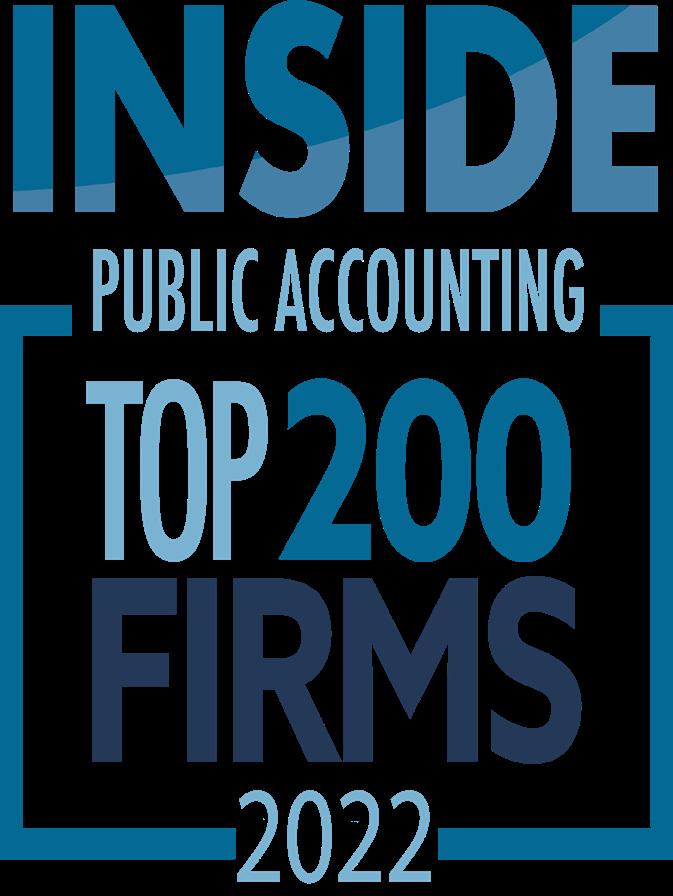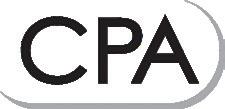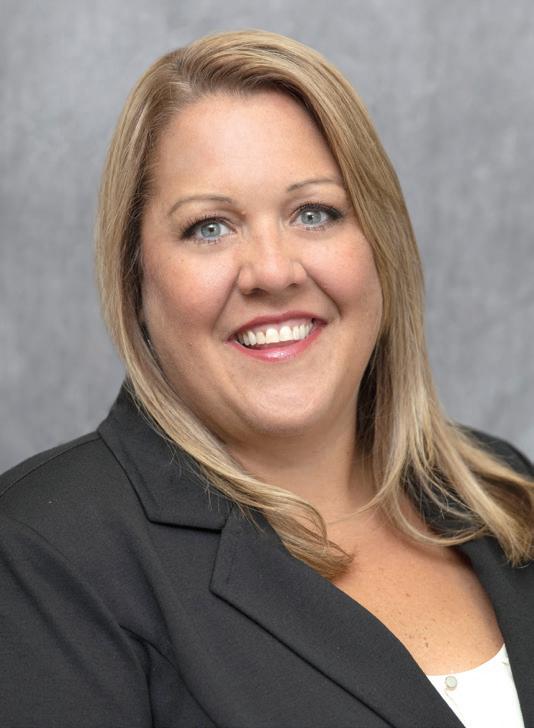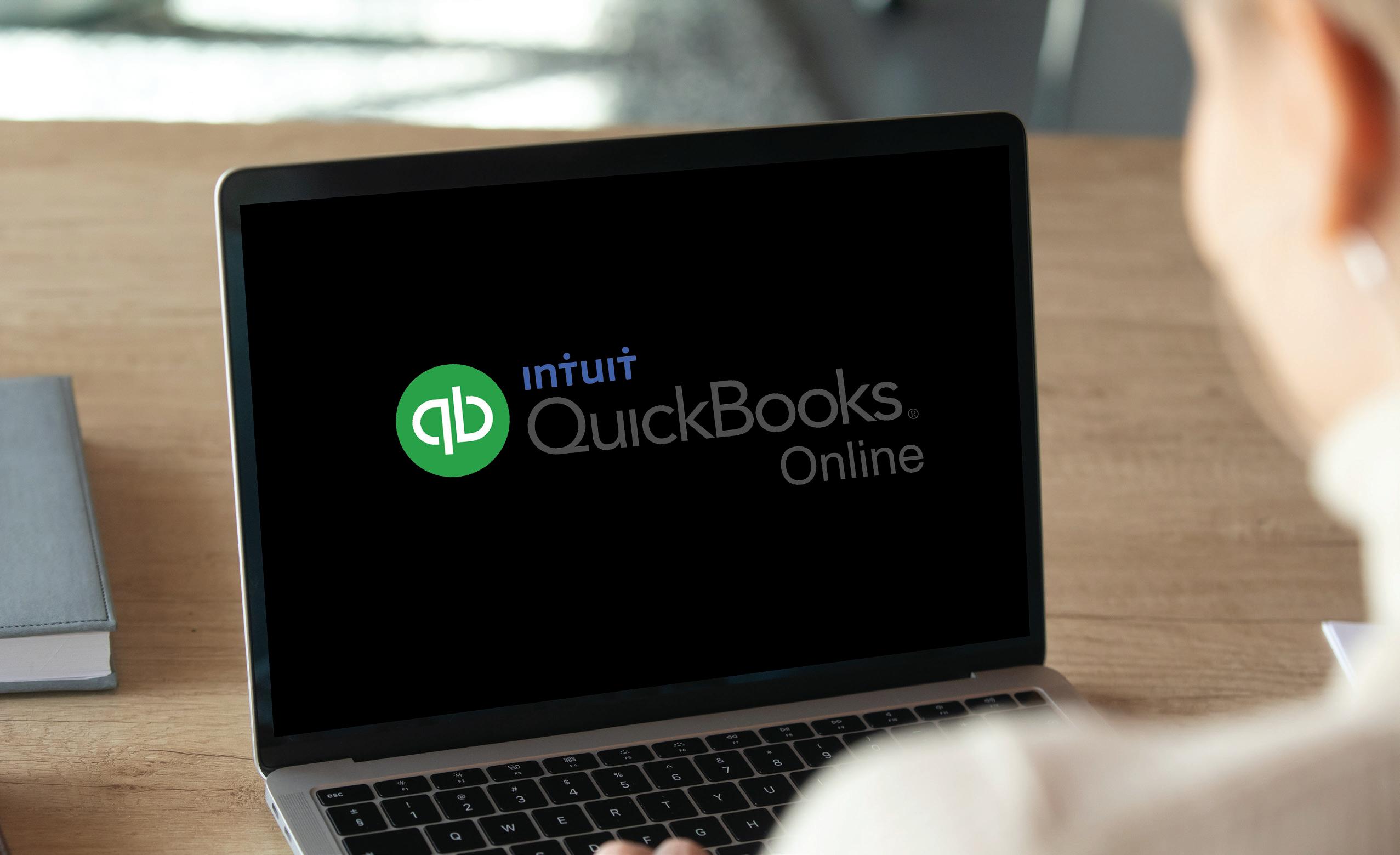TADDITION HE
A Publication of Ketel Thorstenson, LLP
2021 INDIVIDUAL TAX BREAKS THAT HAVE EXPIRED – HOW WILL THEY IMPACT YOU?
2021 Individual Tax Breaks that have Expired – How Will they Impact You? Page 1-2

Inflation Reduction Act of 2022 – New and Improved Tax Credits Page 2-3

The Value of Extending a Tax Return Page 4-5
QuickBooks Online—Is this Software for You? Page 5-6


Research & Development Expenses Tax Update Page 7
It’s the Lease We Could Do Page 8-9
KT News Page 10-12
Danielle Stovall, Manager, tax DepartMent
–Is no longer fully refundable
° Reverts back to lower income phase-out
•AGI over $75,000 for single filers
• AGI over $112,500 for head of household filers
•AGI over $150,000 for married filing joint filers
–No monthly advance payments of the credit

 Danielle Stovall, Manager, Tax Department
Danielle Stovall, Manager, Tax Department

As we inch closer to the end of the year, there is no better time than now to start thinking about your 2022 tax return. There were big tax breaks in 2021 for individuals that you may have taken. However, due to lack of congressional action, many tax benefits have expired at the end of 2021 and will not be available for 2022. While there is still time for Congress to extend some or all of these provisions and make them retroactively available for 2022, which they have done in the past--at this point it seems unlikely. Here is a list to help you understand what expired and how they may affect you.
•Child Tax Credit
–Reverts back to $2,000 per child (from $3,000 per child)
–Reduces the child age back to under 17 to qualify (from under 18)
•Child & Dependent Care Tax Credit
–Reverts back to 20% (from 50%)
–Reverts back to very low AGI phase-out
° At $15,000 it begins reducing from 35% to 20%
–Lowers qualified expenses back to $3,000 for 1 child and $6,000 for 2 or more (from $8,000 and $16,000)
–Credit is non-refundable
•Earned Income Tax Credit (EITC)
–Minimum age for childless worker back to 25 (from 19)
–Maximum age limit back to 65 (from no limit)
–Maximum credit for childless worker drops to $560 (from $1,502)
–Expanded eligibility for former foster youth and homeless youth is dropped
Fall 2022 Volume 28 Issue 3
KT
www.ktllp.com
Inside: KTLLP Is Honored To Be Named
(2021 Individual Tax Breaks that have Expired – How Will they Impact You? Continued on page 2)
TADDITION HE
–Rule allowing you to use your 2019 earned income to calculate EITC if it boosted your credit amount is dropped
•Charitable Gifts –The ability to deduct $300 for single and $600 for married filing joint without itemizing expires
–Reverts back to 60% AGI limit (from 100%) on Schedule A if itemizing.
•Miscellaneous changes –Ability to deduct premium mortgage insurance as mortgage interest has ended –Cafeteria plan deferrals for child care revert back to $5,000 (from $10,500)
Due to some of these changes, you may find in April of 2023 that you have a balance due, when you were expecting a refund.
Please call your tax advisor at KTLLP for assistance in looking at the impact of these changes.
INFLATION REDUCTION ACT OF 2022 – NEW AND IMPROVED TAX CREDITS
HannaH SHeffielD, Cpa, Senior aSSoCiate, tax DepartMent

think will be advantageous to you.
Nonbusiness Energy Property Credit
In an effort to protect taxpayers against the impending recession and economic downturn, the Inflation Reduction Act of 2022 (the Act) was signed and effective August 16, 2022. The Act includes new taxes and credits and over $80 billion allocated to the IRS. While much of the bill (especially the new taxes and IRS funding) is targeted to large corporations, there are new and enhanced energy credits which many taxpayers may benefit. This article highlights the credits that we
The Act increased the nonbusiness energy property credit from 10% to 30% of the amount paid for qualified expenses. The qualified energy efficiency improvements definition was also updated to include air sealing insulation in the definition of a building envelope component. In addition, it removed the requirement that expenditures must be made to the taxpayer’s principal residence—second homes can now earn the credit. The credit is further enhanced by increasing the annual limitation of $1,200 versus the previous $500 lifetime limitation. These updates apply to property placed in service between 2022 and 2032.
Residential Clean Energy Credit
The Residential Clean Energy Credit allows a tax credit for solar electric, solar hot water, fuel cell, small wind energy, geothermal heat pump, and biomass fuel property
installed in homes. The Act extends the credit through 2034 and updates the credit amounts to 26% through 2021, 30% for 2022-2032, 26% for 2033, and 22% for 2034. The Act also adds qualified battery storage technology to the list beginning in 2023.
Accelerated Cost Recovery for Green Building Property
IRS Code Sec. 179D provides an accelerated cost recovery deduction for energy efficient commercial building (EECB) property for the year placed in service. This deduction is enhanced under the Act. It lowers the EECB efficiency standard requirement for deduction benefits from 50% to 25%. It also modifies the formula for calculating the maximum deduction and eliminates the allowance of partial deductions. The enhancement provides more detailed criteria for the allocation of the deduction when EECB property is installed on/in government property. These changes are effective beginning in 2023.
Publication of Ketel Thorstenson,
(2021 Individual Tax Breaks That Have Expired – How Will They Impact You? Continued from page 1)
Hannah Sheffield, CPA, Senior Associate, Tax Department
(Inflation Reduction Act of 2022 – New and Improved Tax Credits continued on page 3)
Fall 2022 - 2 ktllp.com
KT A
LLP
TADDITION HE
A Publication of Ketel Thorstenson, LLP
(Inflation Reduction Act of 2022 – New and Improved Tax Credits continued from page 2) New Energy Efficient Home Credit
The New Energy Efficient Home Credit is an existing credit available to eligible building contractors. The credit is now available for qualified new energy efficient homes acquired by a homeowner before January of 2033. For a home to qualify, the home has to meet specified energy saving requirements and the contractor must meet certain wage requirements. A home must be certified as a zeroenergy ready home under the zero-energy home program of the Department of Energy to meet the energy saving requirement. Any laborers employed to work on the construction of the home must be paid fair wages as compared to the local average to meet the wage requirement. Credits are available from $500 to $5,000, depending on the requirements satisfied.
New Clean Vehicle Credit
The New Qualified Plug-in Electric Drive Motor Vehicle Credit (NQPEDMV) has been renamed the New Clean Vehicle Credit. A taxpayer can receive $3,750 for meeting the critical minerals requirement and $3,750 for meeting the battery component requirement. The definition of a new clean vehicle has a couple different requirements. First, the minimum battery capacity has to be 7 kilowatt hours. Second, the seller of the new clean vehicle is required to provide a report to the buyer and the IRS containing the name and taxpayer identification number of the buyer, the vehicle identification number (VIN), the battery capacity of the vehicle, the verification that the original use of the vehicle commences with the taxpayer, and
the maximum clean vehicle credit allowable to the buyer with respect to the vehicle. The credit can only be claimed for vehicles made by a qualified manufacturer and only one clean vehicle credit is allowed per vehicle. The limitation on the number of vehicles eligible for the credit has been eliminated. A few examples of eligible vehicles are Tesla Model 3, Ford Mustang Mach-E, Jeep Grand Cherokee PHEV. This credit is effective from 2023 through 2031.
Credit for Previously Owned Clean Vehicles
The credit for previously owned clean vehicles is equal to the lesser of $4,000 or 30% of the vehicle’s sales price. The credit is available to married filing joint filers with modified adjusted gross income of $150,000 or less ($75,000 for singles) for the year of purchase and the preceding year. To qualify as a previously owned clean vehicle, the vehicle must be a vehicle that meets the new clean vehicle requirements and is at least 2 years old. This credit is effective from 2023 through 2032.
Credit for Qualified Commercial Clean Vehicles
The credit for qualified commercial clean vehicles is a new credit allowed for businesses. The credit amount per vehicle is the lesser of 15% of the vehicle’s cost basis (30% for vehicles not powered by a gasoline or diesel engine) or the “incremental cost” of the vehicle i.e. the cost of a comparable vehicle powered solely by a gasoline or diesel engine. The maximum credit is $7,500 for vehicles with a gross vehicle weight rating of less than 14,000 pounds or $40,000 for heavier
vehicles. This credit is effective for vehicles placed in service between 2023 through 2032.
Alternative Fuel Vehicle Refueling Property Credit
The Alternative Fuel Vehicle Refueling Property Credit has been enhanced for qualifying property placed in service between 2023 and 2032. The credit is 6% of the property’s cost (30% if the taxpayer meets the wage and apprenticeship requirements) and is limited to $100,000. The credit now includes bidirectional charging equipment and is available for electric charging stations for twoand three-wheeled vehicles that are intended for use on public roads. Charging or refueling property will only be eligible for the credit if it is placed in service within a low-income or rural census tract. Qualified census tracts in South Dakota include, but are not limited to Jackson, Todd, and Ziebach counties. The credit applies to each single unit, not all such property at a location, and is effective between 2023 and 2032.
As you can see, the Inflation Reduction Act of 2022 enhances and creates many new energy related tax credits that may be beneficial for you and your business. Many of the enhancements include time extension and easing of qualification requirements allowing more taxpayers to qualify for the credits. The new credits reflect where technology improvements and global conservation efforts are continuing to advance. Please contact your Ketel Thorstenson tax advisor for more information on how you can take advantage of these credits.
Fall 2022 - 3 ktllp.com
KT
TADDITION HE
THE VALUE OF EXTENDING A TAX RETURN
greg Miner, Cpa, partner

penalties. State taxing authorities also allow for extensions; however, the amount of additional time may not be the same as federal forms.
Greg Miner, CPA, Partner
Imagine a scenario where the lottery jackpot is over 1 billion dollars and your goal is to win. Lucky for you, you can borrow the DeLorean for the weekend and travel into the future to get the winning numbers and win the big prize. Too bad Uncle Sam does not hand out DeLoreans.
The good news is Uncle Sam does allow for 6 months of time travel each year. The IRS allows each business and individual to file for an extension on their income tax returns. These extensions have a lot of great benefits in addition to having more time to file. Buckle up in your DeLorean as we drive into income tax return time travel.
What is a tax return extension? Individuals and businesses can file for an automatic extension of time to file their federal income tax returns. In most cases an extension provides an additional six months to file. This allows you extra time to file without risk of late filing
It is important to understand that paying tax due and filing tax returns are two separate issues. The extension only provides additional time to file. Any tax owing must be paid by the original due date or else you will owe late payment penalties and interest. However, the true benefit of an extension is more than just having more time to file.
In the public accounting profession, we hear many clients say they don’t want to file for an extension. They generally have practical reasons for not wanting to file an extension including: checking items off the to-do list, bank loan compliance, or simply wanting to receive their tax refund. We also hear some reasons that are not valid concerns like fear of IRS audit or incurring additional penalties for doing an extension. To calm those fears, there is no correlation between filing an extension and IRS audit rates---as long as the taxpayer has paid their taxes at the time of the extension. We understand that it feels good to get that refund in hand or check something off the list, but is filing without an extension the best tax strategy?
The three most common benefits from filing an extension are understanding future tax law
developments, changes in the economic performance of your business, and reduction of errors. When business income tax returns are prepared, we generally have several elections and tax credits to consider and evaluate. The elections can be as simple as choosing how much depreciation to take or as complicated as changing when revenue or expenses are recognized. In July, we may have a better understanding what the future holds as compared to March. Empowered with this extra information, tax professionals can evaluate the long-term impacts of these elections and find opportunities to lower overall tax. The nation’s current tax structure forces most filers to file in the first portion of the year. This may not sound bad. However, many errors can be generated due to trying to meet tight deadlines and overworked tax professionals. Extensions also allow tax professionals to spread their work out and spend more time focusing on each individual return and the big picture tax plan.
Another benefit of an extension is that it also extends the three-year window in which amended returns can be filed.
Traditionally, if you were to amend your personal tax return and claim a refund, you have three years to complete the refund request. If you filed your tax return on or before the original due date without extension, you would have
Ketel
Value of Extending a Tax Return continued
Fall 2022 - 4 ktllp.com
KT A Publication of
Thorstenson, LLP
(The
on page 5)
TADDITION HE
(The Value of Extending a Tax Return continued from page 4)
3 years from the original due date to amend a tax return and receive a refund. However, if an extension was filed you could receive up to an additional 6 months of time to claim a refund. I know these rules might sound silly, but it is commonly very important when a tax position needs to be amended or a new law is passed that creates a benefit when money is on the line.
How do you start the extension process? Some taxpayers think the best way to file an extension is to call up there CPA around April 15th and request an extension be filed. However, If you do this, you are
losing out on a lot of opportunity. The best time to start the extension process is in November of the tax year. In November, you and your tax advisor can review the books, pay stubs and other tax information to create a plan for year end. By Christmas, the two of you should have everything buttoned up and know roughly how much tax will be owed on April 15th. In March, your tax advisor can validate the outcome and you can make the tax payment on or before the due date. The tax returns can be prepared in the summer months and then your tax advisor will communicate if the income was well estimated.
Your tax advisor will also help you calculate any income tax estimates that might be due before the tax return is finalized.
If you are interested in checking something off your to-do list four months early and potentially reducing your taxes at the same time, a tax return extension might be the right answer for you! If you want to implement this strategy for the upcoming filing season, give your KTLLP tax advisor a call today to get on their schedule.
QUICKBOOKS ONLINE—IS THIS SOFTWARE FOR YOU?
elizabetH zaitzeff, Mba, aSSoCiate, aCCounting ServiCeS DepartMent
this can be an overwhelming decision. We are commonly asked, “Is QuickBooks Online the right software to use?” While there is not a clear answer to this, let’s take a look at some of the favorite QuickBooks Online (QBO) features that could benefit your business.
Elizabeth Zaitzeff, MBA, Associate, Accounting Services Department

Whether starting or expanding a business, it is always important to find the accounting software that best fits a company’s needs. With so many options out there,
Bank Feeds: Each month, all bank and credit card accounts should be reconciled: this captures all the appropriate revenue and expenditures. Manually entering these transactions can often be tedious and frustrating. In QuickBooks Online, there is the option to link bank and credit card accounts to the program. This will automatically download every transaction that has cleared the bank into a holding area—the bank feeds.
Once transactions are imported into the bank feeds, it is easy to code the revenue and expenditures to the appropriate chart of account categories. There is also the option to set up rules, which allows the software to automatically code transactions into the program. Using bank feeds is an efficient process for reviewing transactions and bank reconciliations are seamless.
Cloud-Based Software: One of the most common capability requests is to be able to access the software from anywhere. While there are ways to have multiple users for QuickBooks Desktop, it is more cumbersome than QuickBooks Online.
QuickBooks Online is a cloud-
(QuickBooks Online—Is this Software for You? Continued on page 6)
A Publication of Ketel Thorstenson,
Fall 2022 - 5 ktllp.com
KT
LLP
TADDITION HE
(QuickBooks Online—Is this Software for You? Continued from page 5) based software through Intuit. This means the data is safely stored and easily accessed through a web browser. Employers can easily add users and give access to their data. Clients also love that they can access their data from any device.
Accounting Firm Access: Businesses like the ability to have their QBO with the option to add multiple users and accounting firms. All it takes is an email address to invite the firm. Once the invitation is accepted, there is instant access to the company’s books.
Payroll E-File Abilities:
can be a daunting task. A payroll subscription can easily be added to a QuickBooks Online account.
We often hear that this payroll software is user friendly: easy to enter employees, process payroll, and even pull reports. A convenient feature in QuickBooks Online is the ability to e-file payroll taxes and forms. Businesses can link their EFTPS account with QuickBooks Online. Once this is set up, payroll tax liability payments can be scheduled straight from QuickBooks Online. Not only does the payment get made it also automatically schedules the payment in the
Notable Mentions: There are many other favorite features of QuickBooks Online. A few notable mentions are as follows: the ability to easily pull reports, the ability to track revenue by class and the ability to easily customize chart of accounts.
Accounting software can be overwhelming and confusing. Ketel Thorstenson has a team of QuickBooks Pro-Advisors that are trained and knowledgeable in QuickBooks Online. If you are contemplating using QuickBooks Online, have questions or want training in the software, we are here and happy to help!
 A Publication of Ketel Thorstenson, LLP
A Publication of Ketel Thorstenson, LLP
Fall 2022 - 6 ktllp.com
KT
TADDITION HE
RESEARCH & DEVELOPMENT EXPENSES TAX UPDATE
JeSS Weaver, Cpa, partner
activities will change in 2022.
Starting in 2022 businesses can no longer deduct R&D expenses all in one year. The new rules require costs to be capitalized over a five or fifteen year period for expenses associated with research conducted outside of the U.S.
 Jess Weaver, CPA, Partner
Jess Weaver, CPA, Partner

Beginning in 2022, research & development (R&D) expenses receive new tax treatment.
Historically, the government has provided multiple tax incentives to companies performing research and development activities under the premise that this is good for economic growth. The government has generally allowed companies to both immediately expense R&D costs and receive tax credits related to these activities. Due to the law changes within the 2017 Tax Cuts and Jobs Act
What does this mean? Taxpayers who have traditionally claimed R&D expenses can expect more taxable income starting in 2022. Higher taxable income means higher tax payments.
Let’s look at an example: Company A has R&D product development resulting in $100,000 of R&D expenses. Prior to 2022, Company A would recognize and deduct 100% of the costs in the year incurred. Now in 2022, the $100,000 of expenses must be amortized over 5 years, resulting in only a $20,000 per year deduction. This example defers $80,000 of expenses until future years and inherently creates higher taxable income in 2022.
available. In the scenario above, Company A may also qualify for the increasing research tax credit totaling a percentage of R&D expenses. In this example, $100,000 of qualified R&D expenditures would result in approximately $6,000 of tax credits to Company A. TCJA did not change the timing or nature of the R&D tax credit. Unfortunately, the extra 2022 tax relating to the deferral of the deduction will be much greater than the 2022 tax credit.
Industries such as construction, engineering, manufacturing, agricultural production, or breweries may be doing some form of qualified research and development.
The five-year deferral of research expenses is not optional. These mandatory capitalization rules and the R&D tax credits are complex to analyze, calculate and document. If you have questions about whether your business qualifies for the R&D tax credit or has capitalization
Fall 2022 - 7 ktllp.com
KT A Publication of Ketel Thorstenson, LLP
TADDITION HE
IT’S THE LEASE WE COULD DO
Jeff Yennie, Cpa, Senior Manager, auDit DepartMent
reporting under Generally Accepted Accounting Principles (GAAP), and does not affect reporting for income tax purposes. If your company is required to follow GAAP, please keep reading.
So, what does ASC 842 require? Here’s a brief overview:
a capital lease in the previous standard, right? If none of this criterion is met, the lease is determined to be an operating lease. However, under the new standard, both types of leases will be recorded on the balance sheet.
Jeff Yennie, CPA, Senior Manager, Audit Department

If it feels like we’ve been discussing the impacts of the new lease standard for a long time, it’s because we have. In February 2016, the Financial Accounting Standards Board issued Accounting Standards Update (ASU) 201602.The implementation date of the standard has been delayed multiple times, but nearly 7 years later, it is finally time to apply the impacts of everybody’s favorite ASU: Accounting Standards Codification 842, Leases.
Private companies will be required to implement the standard for years beginning after December 15, 2021, i.e. calendar years ending December 31, 2022. The implementation will require lessees and lessors to recognize and measure leases as of the adoption date, or January 1, 2022.
Remember, this is only for
From a lessee perspective, all leases will be recorded on the balance sheet, with the exception of short-term leases. At lease commencement, a lessee will classify a lease as either a financing lease or an operating lease. A lease is considered a financing lease when it meets any of the following criteria:
•The lease transfers ownership of the leased asset to the lessee at the end of the lease term
•The lease grants the lessee an option to purchase the underlying asset, and the lessee is reasonably certain to exercise the option. (Note: this does not have to be a bargain purchase option)
•The lease term is for a major part of the remaining economic life of the asset
•The present value of the minimum lease payments equals or exceeds the fair value of the asset
•The asset is not expected to have any value or alternative use to the lessor at the end of the term
Sounds like the definition of
In addition, both types of leases will initially be measured the same. A lease liability will be credited by using a discount rate on the future lease payments, and a “right-of-use” asset will be debited. Subsequent measurement between the two types of leases differs slightly as financing leases will require the recognition of an interest component, while operating leases will not. Overall, the expenses and cash flows from a leasing transaction have not significantly changed from the previous guidance. The primary difference is the recognition of lease assets and liabilities on the balance sheet for operating leases when these were previously offbalance sheet transactions.
From a lessor perspective, the accounting is largely unchanged. Lessors will classify leases as sales-type, direct financing, or operating. Sales-type and directfinancing leases will require the de-recognition of the underlying asset and a net investment in the lease, similar to current guidance.
Seems straightforward. Using present value models and discounted cash flows is not a new concept. Implementation
of Ketel Thorstenson,
(It’s the Lease We Could Do continued on page
Fall 2022 - 8 ktllp.com
KT A Publication
LLP
9)
TADDITION HE
A Publication of Ketel Thorstenson, LLP
(It’s the Lease We Could Do continued from page 8) should be a breeze.
A few other items to consider that may impact the recognition and measurement of right-ofuse assets and lease liabilities.
Lease terms: lease terms may include renewal options. Do you include the time period for the renewal options in the initial calculations? The answer depends on if you are reasonably certain to exercise the option. What does reasonably certain mean? Well, that’s up to you to decide if you’ll take that renewal option that might be 10 years from now.
Lease payments: Leases may include variable payments, payments that escalate over the lease term, or may have purchase and termination options.

rate implicit in the lease, but this isn’t easily determined very often. Additional clarification by the FASB suggests the lessees incremental borrowing rate or the riskfree discount rate (for nonpublic entities) may be used.
Logistically, implementation may be difficult in even identifying and accumulating all of the lease information for your company. This documentation is not always centralized and could exist in multiple places. There’s also the need to identify embedded leases within contracts and separating lease and non-lease components, among other intricacies.
After everything is implemented, we’ll also have to consider the effect on the financial statements. The standard will have an impact on debtto-equity ratios, debt service
lease or buy equipment, vehicles, or office space. It’s important to talk to your lenders sooner rather than later to make sure they are aware of the changes that will be coming in your 2022 financial statements. For many clients, this may be more trouble than it’s worth and lenders might remove the effects of the standard for their analyses anyway. The option of a reporting exception in your GAAP basis financial statements might be worth exploring.
While the concept in its simplest form is rather straightforward, the FASB hasn’t disappointed in including complexities that will make implementation a task. Your KT auditor and advisor will be reaching out soon if they haven’t already. If you have any questions, please contact a member of our lease implementation team. Our lease implementation team members include: Jean
Fall 2022 - 9 ktllp.com
KT
KT News
TADDITION HE
––INTERNS ––
Taylor McSherry, Audit Department


Megan Rehms, Audit Department







We can’t do what we do without the help of a GREAT TEAM. ––NEW HIRES ––
Amie Stevenson, CPA Senior Associate, Tax Department
Brian Pereira, Associate, Tax Department
Dawn Christenson, Associate, Accounting Services Department
Raquel Freeman, Associate, Accounting Services Department
Danielle Newman, Associate, Accounting Services Department
Steph McCoy, Manager, Human Resources Department NEW ––CERTIFICATIONS ––
Brittney Graese, CPA Audit Department
Kristen Kenner, CPA Tax Department
Elijah Houchens, CPA Audit Department
ktllp.com Fall 2022 - 10
KT A Publication of Ketel Thorstenson, LLP
TADDITION







KT News
 Brady Larsen, CPA Senior Manager, Tax Department
Breanna Regier, CPA Senior Associate, Audit Department
Publication of Ketel Thorstenson, LLP
Brady Larsen, CPA Senior Manager, Tax Department
Breanna Regier, CPA Senior Associate, Audit Department
Publication of Ketel Thorstenson, LLP
We can’t do what we do without the help of a GREAT TEAM. ––PROMOTIONS ––
Josh Newman, CPA Manager, Tax Department
Tonya Bunning, Senior Associate, Tax Department
Kelli Thorfinnson, Manager, Accounting Services Department
Kane Guisinger, Senior Associate, Tax Department
Carrie Christensen, CPA Senior Manager, Tax Department
Mary Hlebechuk, CPA Senior Manager, Tax Department
Fall 2022 - 11 ktllp.com
HEKT A
Thank you…for your business.
Ketel Thorstenson, LLP is honored to be your chosen accounting firm and we value the opportunity to work with you. The confidence you have placed in our services is truly appreciated.

Join
Rapid City, Sd
810 Quincy Street 605-342-5630
SpeaRfiSh, Sd 741 Main Street, Ste 230 605-642-7676
CuSteR, Sd 609 Mt. Rushmore Rd. 605-673-3220
Gillette, Wy 305 S. Garner Lake Rd., Ste. A 307-685-4433
The KT Addition is a publication of Ketel Thorstenson, LLP. It is published for clients, advisors and friends of the firm. The technical information included is necessarily brief. No final conclusions on these topics should be drawn without further review and consultation with a professional. Direct any inquiries, email changes or problems with your newsletter to the editor in Rapid City. Editor: tanya@ktllp.com
the conversation online.
Bookmark the KTLLP Blog page for updates at ktllp.com/category/blog KTNEWS Fall 2022 - 12 TADDITION HEKT A Publication of Ketel Thorstenson, LLP
